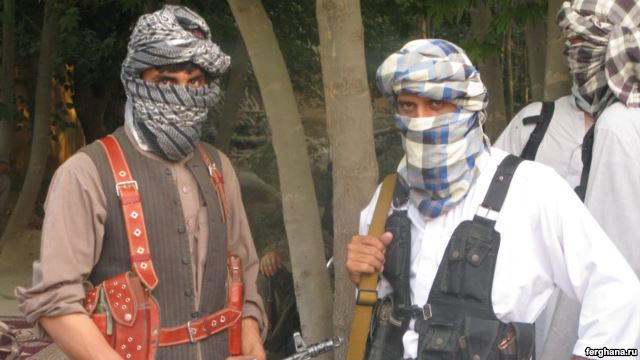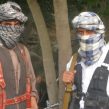
Central Asian Leaders Wary of Post-2014 IMU Threat
Publication: Eurasia Daily Monitor Volume: 10 Issue: 128
By:

In a June 19 press release, the Taliban, referring to itself as the “Islamic Emirate of Afghanistan” stated that it will not “allow others to use Afghan soil to pose a threat to the security of other nations! [sic]” (https://shahamat-english.com/index.php/paighamoona/32948-statement-regarding-inauguration-of-political-office-of-islamic-emirate-in-qatar). Despite this promise and against the background of the International Security Assistance Force’s (ISAF) withdrawal from Afghanistan set for 2014, Central Asian leaders see a growing regional threat from an increasingly independent Islamic Movement of Uzbekistan (IMU). They believe it is capable of infiltrating Central Asia, even if the Taliban remains focused on Afghanistan.
Although the IMU’s leadership is based in Pakistan’s tribal areas, where it coordinates attacks with the Pakistani Taliban, the IMU still considers Central Asia its main target. After the IMU carried out a suicide operation involving two Uzbeks and one Kyrgyz in Panjshir, north of Kabul, on June 3, the IMU said, “we hope from Allah that future conquests are very near in the Mawarounnahr region [the ancient name for modern-day Uzbekistan, Tajikistan, Kyrgyzstan and Kazakhstan]” (Jamia Hafsa Urdu Forum, June 4).
The newest area of IMU expansion in Afghanistan is in Faryab province, bordering Turkmenistan. On May 8, Uzbek, Tajik, Turkmen, North Caucasian, and Afghan IMU fighters tried to seize a water basin near the Turkmenistan-Afghanistan border (Fergana News, May 14). The IMU fighters were repelled by the Afghan army and retreated to the mountains of Faryab, 20 miles from the border, where the Taliban has bases in Almar, Qaisar, Ghormach, Qaramqol and parts of Pashtun Kot districts (aan-afghanistan.com, November 26).
In Faryab, where Uzbek and Turkmen languages are commonly spoken, the IMU has “special units” comprised of Central Asian and North Caucasian members, who are more skilled than average IMU fighters and operate with the Taliban, but have independent political objectives for Central Asia (Khronika Turkmenistana, May 15). Before the United States’ October 2001 invasion of Afghanistan, Turkmenistan used to supply the Mullah Omar–led Afghan Taliban government with fuel and oil in return for détente with Kabul. However, many Turkmenistanis were politically marginalized during the Saparmurat “Turkmenbashi” Niyazov era (1991–2006) and under President Gurbanguly Berdimuhamedov since 2006. And, according to the exiled chairman of the banned Republican Party of Turkmenistan, these dissidents may now be collaborating with ethnic Afghan Turkmen in the IMU to destabilize the government of Turkmenistan. Moreover, the IMU may also use bases in Turkmenistan for launching attacks against Uzbekistan and Kazakhstan (Khronika Turkmenistana, May 15).
Serious doubts also remain about whether the Taliban will be able to restrain the IMU after 2013. In the same month that the Taliban announced its “Khalid bin Waleed spring offensive” in April 2013, the attacks in Faryab increased. In the largest such attack that month, Taliban militants in Afghan army uniforms killed 44 people in a suicide operation in a courthouse (AP, April 3). It was the deadliest bombing incident in Afghanistan since an IMU leader orchestrated an attack in October 2012 in which a suicide bomber killed 41 people, including senior officials, at a mosque, also in Faryab (ISAF reports, December 1, 2012).
Uzbekistan’s President Islam Karimov and Kazakhstan’s President Nursultan Nazarbayev recently expressed their own concerns in a June 13 meeting about post-2014 Afghanistan. Karimov said that the situation causes “special alarm and concern” because Afghanistan may face an “escalation of violent confrontations after the withdrawal of the NATO [North Atlantic Treaty Organization] coalition forces in 2014” (Novy Vek, June 14). However, in the one Afghan province that borders Uzbekistan, Balkh, the IMU presence is lighter than in other northern provinces. Nonetheless, in April 2013, two senior IMU leaders were arrested in separate operations in Balkh (ISAF reports, April 22).
One of Kazakhstan’s main concerns is that its citizens continue to be involved in IMU operations in Afghanistan and could use their linkages to the Caucasus Emirate and Salafist brotherhoods in Western Kazakhstan to destabilize the country. On June 11, 2013, a Kazakhstani national was one of five militants in an IMU suicide operation team arrested in Badakshan Province after the cell crossed into the province from North Waziristan, Pakistan (Afghan Islamic Press [Peshawar], June 11). That same month, Nurtay Abykayev, chairman of the National Security Committee of Kazakhstan, said that his country was working with Russian intelligence to identify the Kazakhstani members in Badakshan, who could number more than 100 people (Interfax News, June 6).
Since 2012, more than 200 Central Asian militants from the IMU and its Tajikistan-based affiliate, Jamaat Ansarullah, have used that same route to enter Badakshan (Central Asia Online, July 5, 2012; March 21, 2013). Meanwhile, in neighboring Nuristan province of Afghanistan, the deputy police chief, Colonel Ghulam Farooq, said on June 15 that more than 1,000 Pakistani, Uzbek, North Caucasian and Arab fighters have established hideouts to prepare to capture the districts of Kamdesh, Bargi Matal, Duab and Wanth Waigal (Pajhwok Afghan News, June 15).
The IMU also appears to be increasing its operations in Russia and China. On May 20, 2013, a cell of Uzbek IMU members trained in Pakistan and planning to carry out attacks in Moscow were arrested by the city’s police (Moskovskiy Komsomolets, May 20). In April, one Uzbek and one North Caucasian in the IMU were arrested in Miran Shah, North Waziristan, reportedly planning to carry out attacks on Chinese interests at Gwadar Port, in Pakistan, or in Xinjiang, China (BBC Urdu, May 21).
With half a year remaining until the US and NATO withdrawal, three main trends have emerged. First, the IMU is extending its operations to northern Afghanistan at an increasingly fast pace, now threatening Turkmenistan. Second, the Taliban is coordinating operations with the IMU in northern Afghanistan, and increasingly in Faryab. Third, China and Russia are both targets of the IMU and therefore are interested in strengthening their security posture in Central Asia as the US forces withdraw. The June 13 Shanghai Cooperation Organization anti-terrorism exercises in Kazakhstan, with 5,000 troops from China, Kazakhstan, Kyrgyzstan, Russia and Tajikistan participating (Xinhua, June 13), is but the latest example of this latter dynamic.




